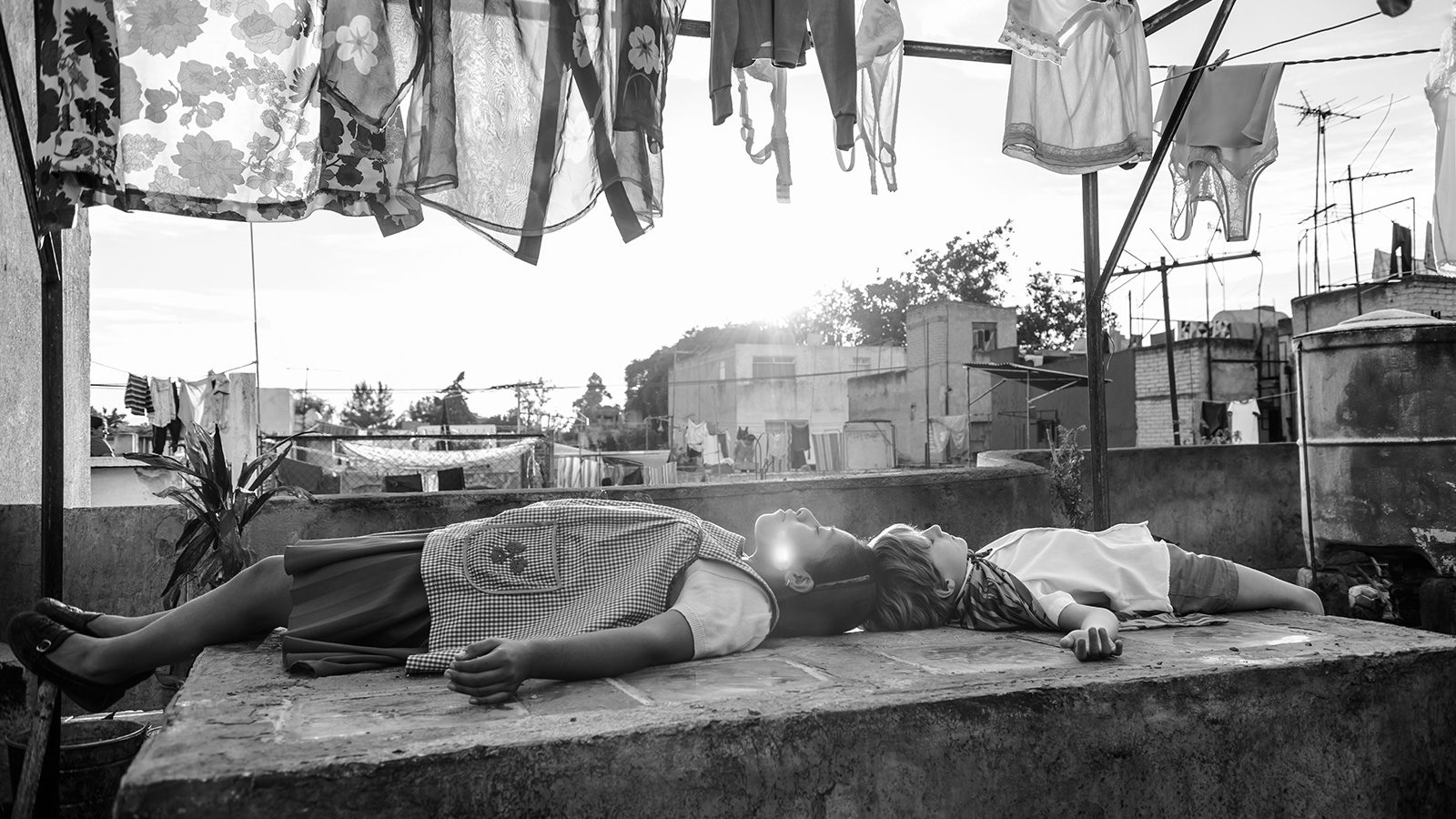This feature is a part of a series on the best films of the 2010s, resulting from our ranked top 25, which you can read here. This is #8.
“Roma” is a movie with its heart in the past and present. Although each frame is a meticulously recreated memory from director, writer and cinematographer Alfonso Cuarón’s childhood in 1970s Mexico City, “Roma” is filtered not through his own experience or that of a film camera but by a character based on his family’s caretaker and domestic worker, Liboria “Libo” Rodríguez, and brought to the big screen in crisp digital black-and-white images. The movie is an empathetic portrayal of what Cleo (Yalitza Aparicio), Libo’s fictionalized stand-in, may have felt enduring personal tragedies as she’s forced to take on the emotional burdens of her employers’ divorce.
If the heart of “Roma” comes from Cuarón’s tender evocation of the past, then Aparicio is this movie’s soul. A schoolteacher turned actress, she weathered the unknown of this industry and worked with Cuarón’s unorthodox approach to acting on this project—no one on set save for a few technicians knew what would happen until the day-of—to conjure up a performance that would lead her to become the first indigenous Mexican woman to be nominated for a Best Actress Oscar. The movie thrives on her naturalistic expressions and reactions to tell Cleo’s story in a way Cuarón’s camera could not. There is so much subtlety in her performance that many viewers might miss or take for granted, but it’s there in the moments where Cleo sings the children to sleep, in the quiet sighs between tiresome housework or in the slack-faced looks of disbelief when her life takes an unexpected turn.
In addition to the film’s impassioned story and performances, “Roma” also layers in political, cultural, and social themes that are just as prescient today as they were back then. The divisions between the wealthy family and Cleo are painfully relevant throughout, emphasized in moments like when the family sits across many sofas to watch a TV show and Cleo joins them by sitting on a pillow on the floor. Even as one of the children reaches to embrace her, she’s visually separated from them, never truly treated as a family member although she’s often called upon to act like one. These reminders happen again and again, like when Cleo is rushed to the hospital and the grandmother can’t remember any details about her, or after Cleo rescues the children on the beach. She’s just as easily sent to make them banana milkshakes at home.

“Roma” also observes class tension within Cleo’s relationship with Fermín (Jorge Antonio Guerrero), who looks down at her for job as a domestic worker, and cultural tension when Cleo and her co-worker Adela (Nancy García) talk in Mixtec and they are told to stop by one of the kids. It’s a childish impulse to want to not be excluded from the grown-ups’ conversation, but his careless order hurts more deeply than that. In a vacation to the countryside, we see a fancy hacienda where wealthy families ring in the new year, but downstairs, there’s a rustic party that belongs to workers like Cleo, once again visually separating the classes. These aspects are all roiling in the background just as beyond the safety of the home, the Corpus Christi Massacre erupts and students are killed in the store where Cleo is shopping for a crib. “Roma” may be set in the past, but fears about violence, political unrest, and the tensions between different classes and cultures have hardly aged a day.
By widening the scope of his scenes and adapting the style of his longtime collaborator Emmanuel Lubezki, Cuarón elevates Cleo’s story to the scale of an operatic epic. The shots of Cleo chasing after the kids running to the movie theater, racing her girlfriend to meet up with their dates, or even when Cleo is left sitting alone in a grand movie house feel enormous, thanks in part to Cuarón’s dedication to long takes and production designer Eugenio Caballero’s dedication in recreating Mexico of yesteryear. The elegant pans around the family home and the observational gaze of the camera emphasize the heaviness of Cleo’s workload. Even natural settings like the forest or the beach feel bigger in scale because Cleo’s world does not fade away in too many edits. It is bustling, noisy, crowded and littered with life. Even the occasional close-up on objects like food or water adds to the sensational texture of the film. The focus is always on Cleo, but she is not the only subject in the frame we’re meant to focus on.
That attention to detail extends to the film’s captivating sound design. Skip Lievsay, who also worked with Cuarón on his Oscar-winning 2013 film “Gravity,” was part of the team that worked with Cuarón to recreate the sounds of a cityscape from decades earlier. Mixing together the sounds of old car motors, dogs barking, women washing laundry, street vendors playing a flute or calling out for customers like a symphony, “Roma” finds grandeur even in minute details.

It takes maturity to see someone’s needs beyond your own. It’s likely that as a child, Cuarón could not understand what Libo went through working for his family in those days, and “Roma” was his attempt to understand their shared past. Consider how thoughtless the male protagonists of Cuarón’s “Y Tu Mamá También” behave compared to Cleo, who’s forced to look after the needs of others to the potential detriment of her own. Libo serves as a throughline in this development as she also appears in “Y Tu Mamá También” as a domestic worker whose story exists only in the periphery of the boys’ misadventures. In “Roma,” she’s the center of her own adventure.
As Cuaron’s personal vision looked to his own past, it also held the seeds of a yet-to-be-determined future, bringing prestige to a streaming platform, and becoming the first Netflix feature to make big waves at the Oscars. If this new world ensures potential modern classics like “Roma” can be produced and easily accessed around the world on any given day, then perhaps there’s something to look forward to in the next era of cinema.
Even more importantly, the impact of “Roma” extended beyond the screen. It became a touchstone in the discussion about race and discrimination in Latin American media as Aparicio broke barriers for indigenous Mexican women, landing on magazine covers and talking to outlets that rarely—if ever—featured anyone who looked like her. As Aparicio’s image was celebrated, others brought up the plight of domestic workers, noted how many still lack basic workplace protections, and reflected on their own experiences growing up with women like Cleo.












